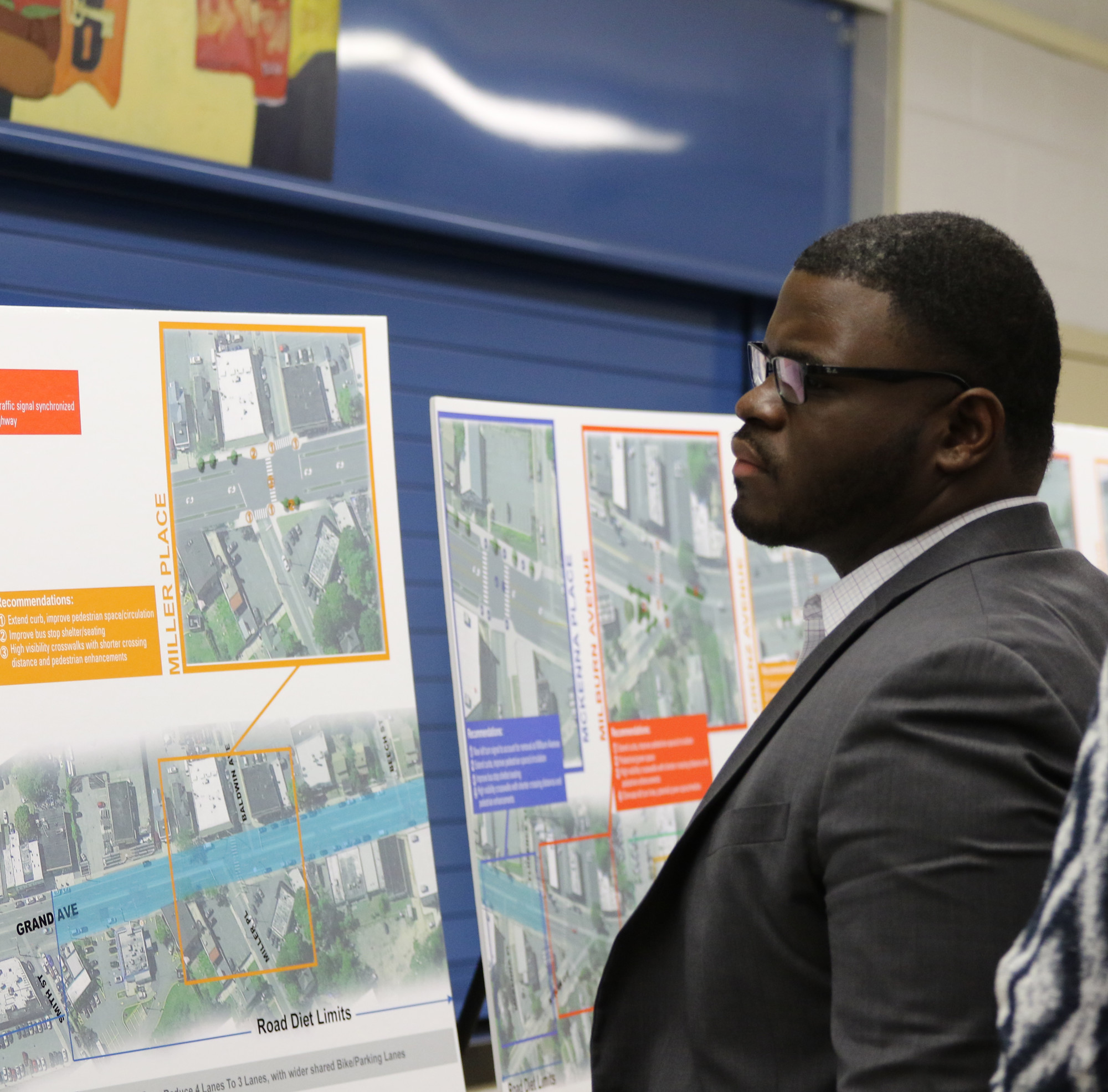Grand questions about traffic study
Residents query the need for bike lanes, seek to keep parking on Avenue
The questions came fast and, often, furious when Nassau County engineers and experts at a public meeting last week unveiled their recommendations to regulate traffic along Grand Avenue.
Chief among the recommendations were options either to create wider lanes for bicycles or for parking. These were also the recommendations that generated the most discussion.
The recommendations propose to achieve these options by using a system known as a road diet. This is generally described as removal of a travel lane from a road and utilizing the space for other uses and travel modes, such as bicycle lanes. Road diets are known to improve safety and reduce certain types of accidents. They are also a proven measure to calm traffic.
In the case of Grand Avenue, engineers recommend at certain intersections, the street lose two lanes of traffic — one northbound and one southbound — and a center turn lane be created. This, they said, will free up space for a bicycle lane or for wider parking lanes.
Several people at the meeting rapped the proposal, saying that Grand had enough traffic, and that cutting out two lanes would back up traffic even further.
Resident Amy Fink, who said she lived on Lakeside Drive, said she and her husband don’t even turn onto Grand anymore because the traffic is so heavy. She said adding a bike lane to Grand would be dangerous.
Another resident, Lisbeth Moore, agreed with her. She suggested putting any bike lanes on other roads, such as Milburn Avenue.
Many other residents and merchants also said they feared that that adding a bike lane would take away from parking availability. But the engineers stressed that the bike lane was just one option and that residents could choose to widen the existing parking lanes.
The report is known as the “Complete Streets” study, because it addresses not only automobile travel, but also other modes of transportation, such as bicycles and buses. In addition, its goal is to create a walkable area that is attractive and convenient for those on foot.
Other suggestions from the experts included creating “bumpouts” that would make for easier bus pickups, and extending curbs which would make it safer and easier to cross streets on foot.

 50.0°,
Overcast
50.0°,
Overcast 







